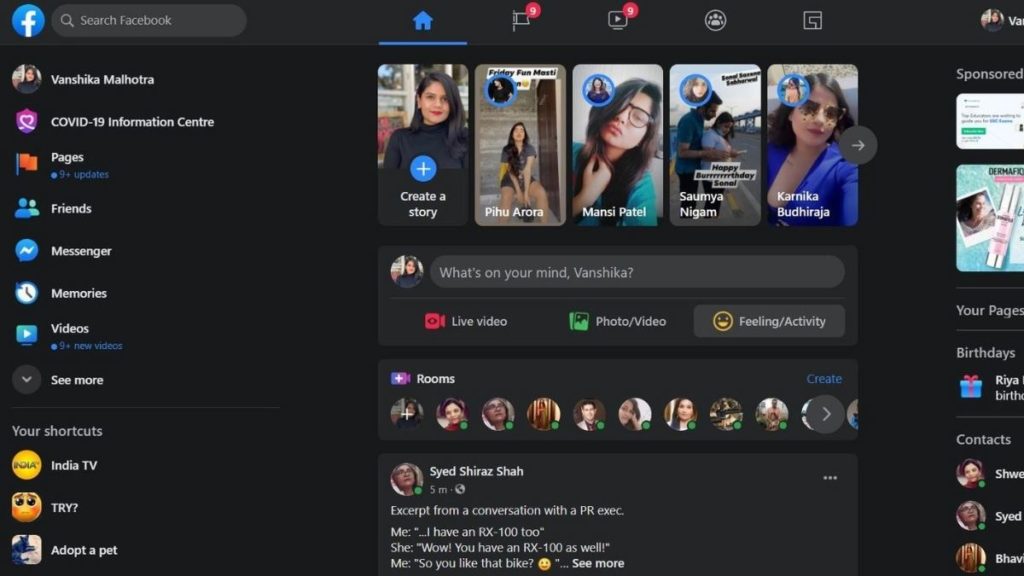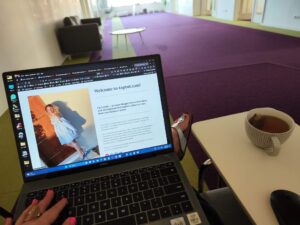Bad news for everyone who cannot get used to the new Facebook design: From September, there will only be a new view.
Facebook’s classic desktop design with the iconic blue top bar will no longer be available from September 2020.
In 2019, Facebook introduced a new desktop interface that is more based on the look of the service’s mobile apps. So far, however, the use of the new interface has not been mandatory. If you wanted, you could switch back to the classic view at any time via the menu. Now, however, Facebook is advising all those willing to switch that the option will no longer be available from September.

With the redesign presented at Facebook’s developer conference F8 last year, the social network has aligned the desktop and app versions’ interfaces. The new design also focuses more on Facebook groups than before. Besides, Facebook has placed newer offers such as the marketplace or the game streaming area in a prominent position in the top navigation bar.
Facebook is being redesigned.
At its developer conference, F8, Facebook announced a redesign of its mobile app and the browser version. Instead of the news feed, groups should be the focus of the social network in the future.
At its F8 developer conference, Facebook announced a number of changes for its various services. There should be a new desktop app for Windows and iOS as well as end-to-end encryption for Facebook Messenger. Facebook has also given the main app a new look. With the redesign, the Facebook app and the browser version of the page should load significantly faster. In addition, Facebook will place greater emphasis on groups in the future. The newsfeed takes a back seat.
The new Facebook design FB5 looks tidy and fresher at first glance. In the future, white will dominate instead of blue as before. The stories come to the fore – also at the expense of the news feed. As Mark Zuckerberg told the New York Times, the number of published stories exceeds the number of news feed posts in 2019. Private messenger communication, groups, and stories are, by far, the fastest-growing areas of online communication.

Facebook redesign: focus on groups
The heart of the social network should accordingly be the groups, as Facebook writes in a blog entry. According to the group, over 400 million people are currently members of a group. A new group area should make it easier to discover groups.
In addition, your own personal feed will appear there with the activities of the groups you belong to. In the future, content should be able to be shared in a group directly via the news feed. There will also be other new features for groups, such as anonymous questions in health groups or chat functions for gaming groups.
When redesigning the Facebook app and the browser version, the developers also worked on the code-base. This should ensure faster loading and more accessibility. The redesigned app version is already visible to most users or in the next few days. The browser version is to be published in the new design in the next few months.
More privacy for Facebook users
Overall, Mark Zuckerberg wants to give Facebook users more privacy. For example, as part of this strategy, the chat apps are to be encrypted, and more private rooms are to be offered in the messengers. “The future is private,” said Zuckerberg at the start of the F8 – contrary to earlier statements by the Facebook boss. This shows how much the past few months’ data protection scandals have put the social network under pressure. To what extent it is possible to enforce privacy on Facebook and its numerous services remains to be seen.
The definitive end of the classic Facebook view
Ultimately, it was foreseeable that Facebook would eventually switch off the classic view. In the long term, maintaining two completely different interfaces means additional development effort, since every new feature must also work in both versions of the page.
Users still have until September to use the classic desktop view, but after that, they will have to get used to the new look – at least if they want to stay true to the social network.
Data analytics expert. As an analyst and project manager, I have proven to be a strong leader and team player in maintaining a suitable workspace for workers and industries in the oil and gas sector.
By taking into account various factors, with the assistance of state of the art technologies and the utilization of Big Data Analytics.
This includes considering various aspects like volume, velocity, variety, veracity, value together with complexity.
With the recent advent of data recording sensors in exploration, drilling, and production operations, oil and gas industry has become a massive data intensive industry.





